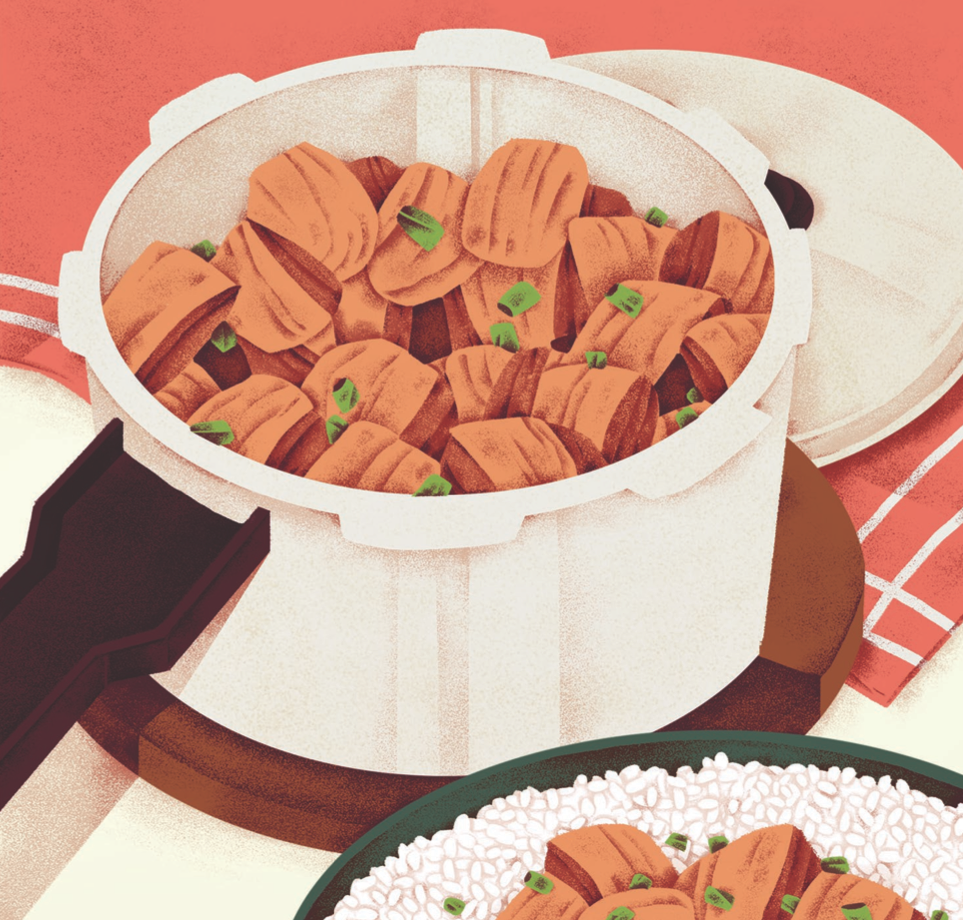It’s time to talk about pressure cookers. Have I not extolled their virtues to you yet? Let me throw a couple mental images at you: lentils going from dried and unsoaked to perfectly tender in 10 minutes. Juicy, fall-off-the-bone ribs in 20. Full-flavour chicken stock in just over an hour. See where I’m going here? What may seem like a splurge kitchen appliance is actually an investment in free time. And trust — you’ll use it more than you think. The best part is, on a regular weeknight, you can turn out dishes normally reserved for long, slow weekend simmers on the stove. Lamb curry? Baked beans? Carnitas? So many savoury options, just in time for hibernation season.
 Pressure cookers work by locking in steam and allowing pressure to build inside the pot,which heats water above its boiling point, cooking foods faster. Ingredients that usually take a long time to cook (tough cuts of meat, legumes) can be cooked in a fraction of the time. And the higher heat can encourage caramelization and flavour development that take hours on a stovetop. Those who grew up with pressure cookers in their childhood kitchen may be particularly intimidated, mostly because older models rattled like crazy and lacked safety mechanisms. But newer models have rubber gaskets that secure the lid, and pressure-release valves, as well as strong locking mechanisms that should assuage your fears of exploding chickpea stews.
Pressure cookers work by locking in steam and allowing pressure to build inside the pot,which heats water above its boiling point, cooking foods faster. Ingredients that usually take a long time to cook (tough cuts of meat, legumes) can be cooked in a fraction of the time. And the higher heat can encourage caramelization and flavour development that take hours on a stovetop. Those who grew up with pressure cookers in their childhood kitchen may be particularly intimidated, mostly because older models rattled like crazy and lacked safety mechanisms. But newer models have rubber gaskets that secure the lid, and pressure-release valves, as well as strong locking mechanisms that should assuage your fears of exploding chickpea stews.
Now that your safety concerns are addressed, how about taking a stab at this recipe for adobo pork? Adobo is a Filipino style of cooking vegetables and meat (typically chicken or pork) in soy sauce, vinegar and garlic, which, when cooked low and slow (or in this case, high and fast), combine to create an unexpectedly rich and complex sauce with no harsh acidity from the vinegar. This recipe shows off how a pressure cooker can make quick work of cubed pork shoulder, which would take three or four hours of stovetop braising to become tender. I’ve taken some liberties with the traditional recipe and added coconut milk and an ancho chili. Give it a try! No pressure, though.
Adobo Pork
Serves 4
- 1 kg (2–2.5 lbs) boneless pork shoulder or butt, cut into 5–8 cm (2–3 inch) cubes
- 2 leeks, roughly chopped
- 1 whole head garlic, cloves separated and smashed
- 2.5 cm (1 inch) piece ginger, minced
- 250 ml (1 cup) chicken stock
- 60 ml (1⁄4 cup) soy sauce
- 60 ml (1⁄4 cup) cider vinegar
- 1 can coconut milk
- 1 whole dried ancho chile
- 2 bay leaves
- 15 m l(1 tbsp) whole pepper corns
- 15 ml (1 tbsp) brown sugar
- Steamed basmati rice
- In pressure cooker, heat a few tablespoons vegetable oil on medium-high heat. Sear pork pieces in batches and set aside.
- Sauté leeks, garlic and ginger over medium heat for a few minutes. Add the rest of the ingredients (except for the rice) and mix for 3 minutes, scraping up any brown bits from the pork.
- Return pork to pot and secure lid. Bring to a boil, then reduce to medium once steam begins to release. Cook for 18 minutes, then remove from heat. Wait until steam is completely released to open lid.
- Skim fat off top and season to taste. Divide rice into bowls and spoon meat over rice. Garnish with chopped green onion.
 Sara Chan is in-house counsel at Corus Entertainment, food enthusiast and unprofessional home chef. Her favourite food group is pork. Check out more of Sara’s great recipes.
Sara Chan is in-house counsel at Corus Entertainment, food enthusiast and unprofessional home chef. Her favourite food group is pork. Check out more of Sara’s great recipes.
 This story is from our Winter 2015 issue.
This story is from our Winter 2015 issue.
Illustration by Jeannie Phan


